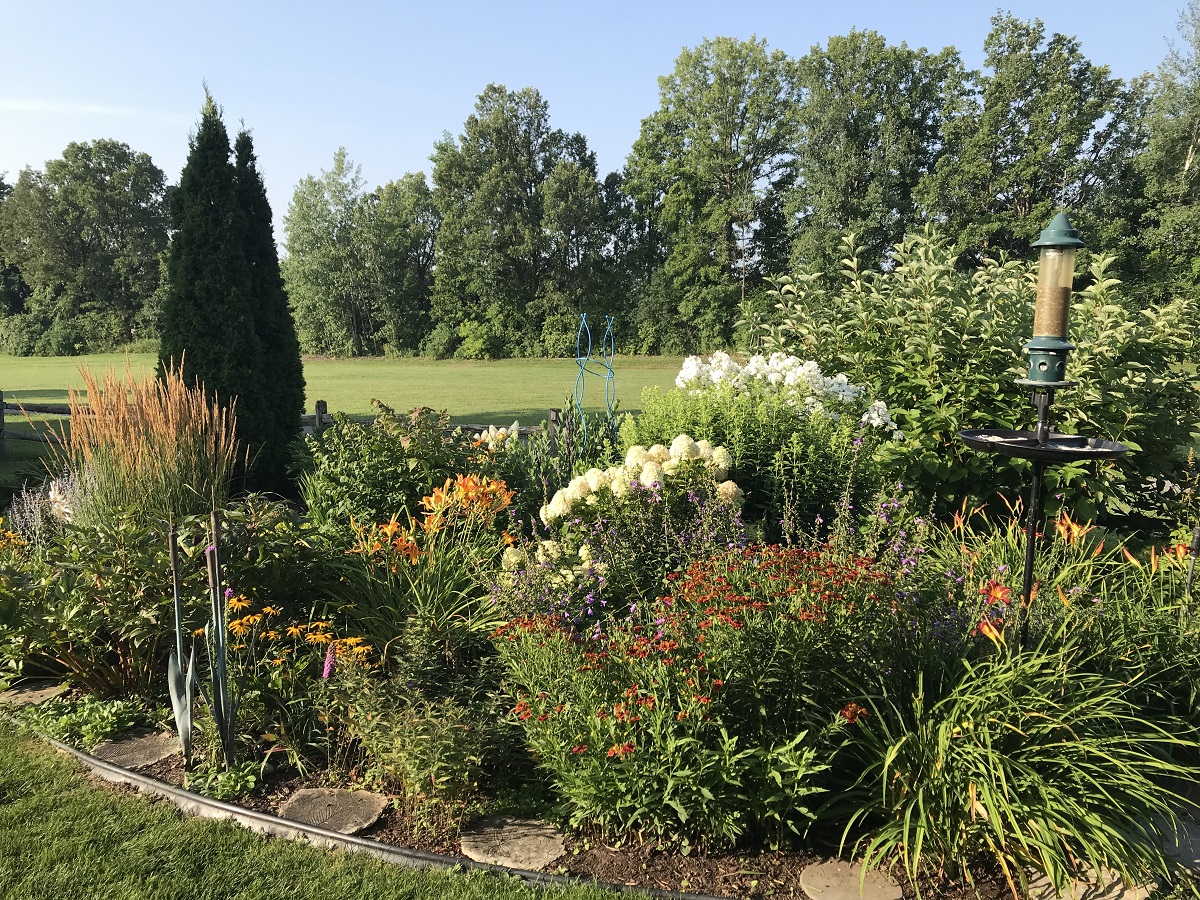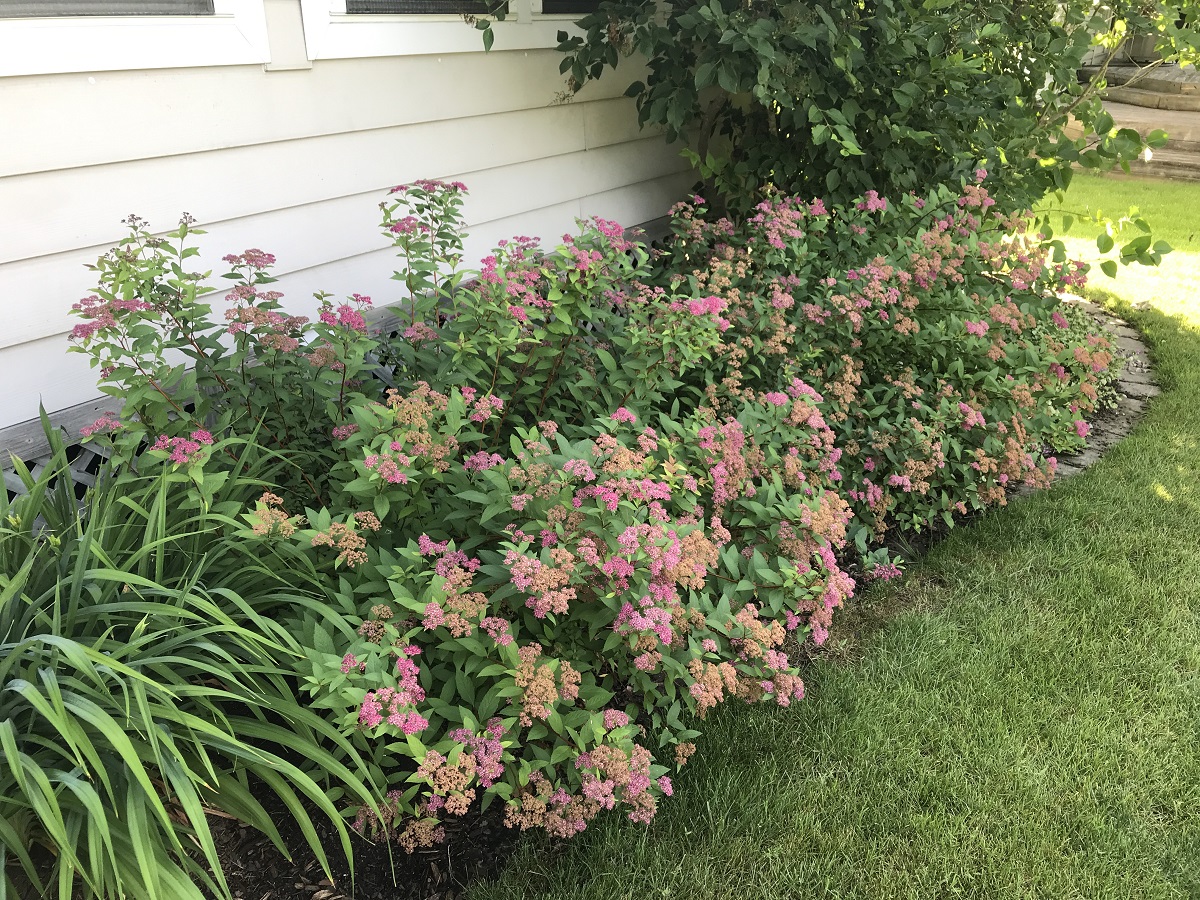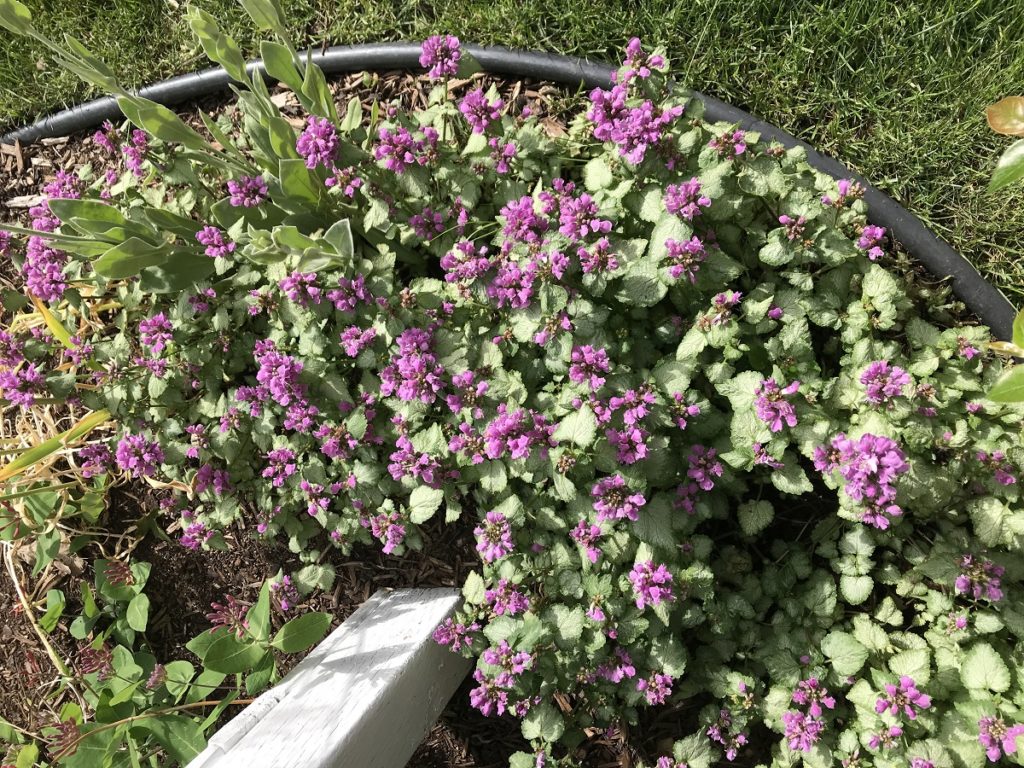Text and photos Lee Ann Smith
Imagine filling your garden with beautiful plants that hardly need any attention. Imagine being able to travel during the growing season and not worry about coming home to hours of garden maintenance. Imagine spending more time golfing or relaxing with friends on your patio.
Sound like a pipe dream? I have good news: Plenty of plants deliver exceptional performance while not demanding much care. Whether you are designing with these plants “from the ground up” or restructuring your garden to incorporate more of them, using high-performance, low-maintenance plants can increase your gardening enjoyment and reduce your workload at the same time.

What Makes a Plant High-Performance?
I consider a plant high-performance if it meets one or more of these criteria:
- It blooms for three weeks or more, and/or provides foliage with interesting colour and texture.
- It provides multiple seasons of interest, for example summer bloom followed by colourful autumn foliage, followed by seed heads that last through winter.
- It lives a long time, ideally 10 years or more.
- It thrives in our local environment, which is unpredictable from year to year. The Ottawa area can have wet, dry, windy or humid seasons and regularly experiences a temperature range of +35°C to -35°C.
What Does Low-Maintenance Mean?

Sadly, there is no such thing as a no-maintenance plant. Plants are living organisms and each one will require some amount of care.
The plants I classify as low-maintenance:
- do not need staking, which eliminates perennials like Delphinium and meadow rue (Thalictrum)
- do not need deadheading, which eliminates perennial spiked speedwell (Veronica spicata) and annual verbena (Glandularia x hybrida)
- are slow-to-medium spreaders, not needing to be split every couple of years, which eliminates Carpathian bellflower (Campanula carpatica)
- are hardy to our area, which eliminates tender plants like Japanese maple (Acer palmatum)
- do not need a lot of fertilizer, raking, insect control or watering. (The plant that requires these tasks the most is lawn grass.
I have also learned that a kind of hierarchy exists when it comes to plant maintenance. In general, annuals require more maintenance than perennials, which in general require more maintenance than shrubs and trees. Within each of these three categories of plants, there is also a hierarchy. Within the shrub category, for example, a hybrid tea rose (Rosa x hybrida) needs more work to maintain than a goldflame spirea (Spiraea x bumalda goldflame).

How Do You Recognize A Low-Maintenance Plant?
Not sure if a potted treasure at the garden centre qualifies as low-maintenance? Read the tag and/or do some research before buying. If you are buying from a reputable local nursery, you can ask a staff member. Your key questions should include:
- What care is needed? The tag should say “easy care,” “easy to grow” or even “thrives on neglect.” Look for “drought tolerant,” “disease resistant” and hardy in Zones 4 or below. A plant tagged “Ontario native” is more likely to thrive here than a more exotic plant.
- How fast does it grow? Beware of a plant tagged “fast growing,” which could be code for invasive.
Above all, make sure a plant’s requirements for soil type, sun, water and space match the conditions you have in your garden. Putting the right plant in the right place is key high-performance, low-maintenance functionality.
Implementing easy-care performance
When starting a new garden, you can design with these types of plants in mind. Remember: A design using mostly trees and shrubs will be much easier to maintain over time than one based on perennials and annuals.
What if you already have a garden? I have used a simple process of assessment in my own garden that has allowed me to incorporate more plants that perform well and demand little upkeep. It involves taking a look at what plants you have, asking three questions and making critical, sometimes ruthless, choices.
1: Is the plant giving you a high return on your investment of effort? This is a yes-or-no question. If it is not meeting the performance criteria outlined above, consider replacing it.
2: Is this plant struggling? Take a hard look at which plants you are nursing along. Consider not doing this work.
3a: Do you love this plant? If you don’t love it, make room for something that makes your heart happy? If you do love it, and it demands higher maintenance than other plants, keep it.
3b: Does this plant have sentimental value? Think of the rose you bought because your grandmother had one like it and it helps you remember her.
Hopefully, you’ll only value a few higher-maintenance plants, in the interest of bringing in new, beautiful plants that lessen your gardening workload.
The renovation of my large-scale gardens took three seasons for me to complete. The process worked and my reward has been much more enjoyment with much less effort.
I hope you, too, can assess the plants you have or buy, to determine which ones will contribute to a new, easier, beautiful landscape.
High-Performance, Low-Maintenance Plant Suggestions
These are some tried-and-true plant selections. Note: spp. indicates there is more than one species of the plant; cvs. indicates there are several varieties of that species. This means you will have a selection of features, such as height and colour.
Trees and Shrubs
Emerald spreader yew (Taxus cuspidata Emerald Spreader)
Eastern white cedar (Thuja occidentalis cvs.)
Panicle hydrangea (Hydrangea paniculata cvs.)
Bumalda spirea (Spiraea x bumalda)
Ninebark (Physocarpus opulifolius cvs.)
Perennials, Bulbs and Ornamental Grass
Black-eyed Susan (Rudbeckia hirta cvs.)
Daffodils (Narcissus spp.)
Sneezeweed (Helenium spp.)
Hosta (Hosta spp.)
Karl Foerster feather reed grass (Calamagrostis x acutiflora Karl Foerster)
Purple coneflower (Echinacea spp.)
Angelina sedum (Sedum rupestre Angelina)
Autumn joy sedum (Hylotelephium spectabile Autumn Joy)
Culver’s root (Veronicastrum virginicum)
Red Nancy spotted dead nettle (Lamium maculatum Red Nancy)
Annuals for Containers
Many of us love the bling of container plants, despite the attention they demand. These annuals are tougher than most:
Baby Tut cyperus (Cyperus involucratus ‘Baby Tut’)
Solenia® rieger begonia (Begonia x hiemalis)
Compact SunPatiens® (Impatiens x hybrida SunPatiens®)
Wishbone flower (Torenia fournieri)
Lee Ann Smith loves to create beauty using plants. She has designed and planted many high performance, low maintenance gardens in the Ottawa area, for herself, for family and for friends. She volunteers with the Master Gardeners of Ottawa-Carleton.
CAPTIONS
Photo 1: One of the author’s gardens filled with high-performance, low-maintenance plants.
Photo 2: Perennial groundcover, Lamium maculatum Red Nancy.
Photo 3: Flowering shrub, Spiraea x bumald






